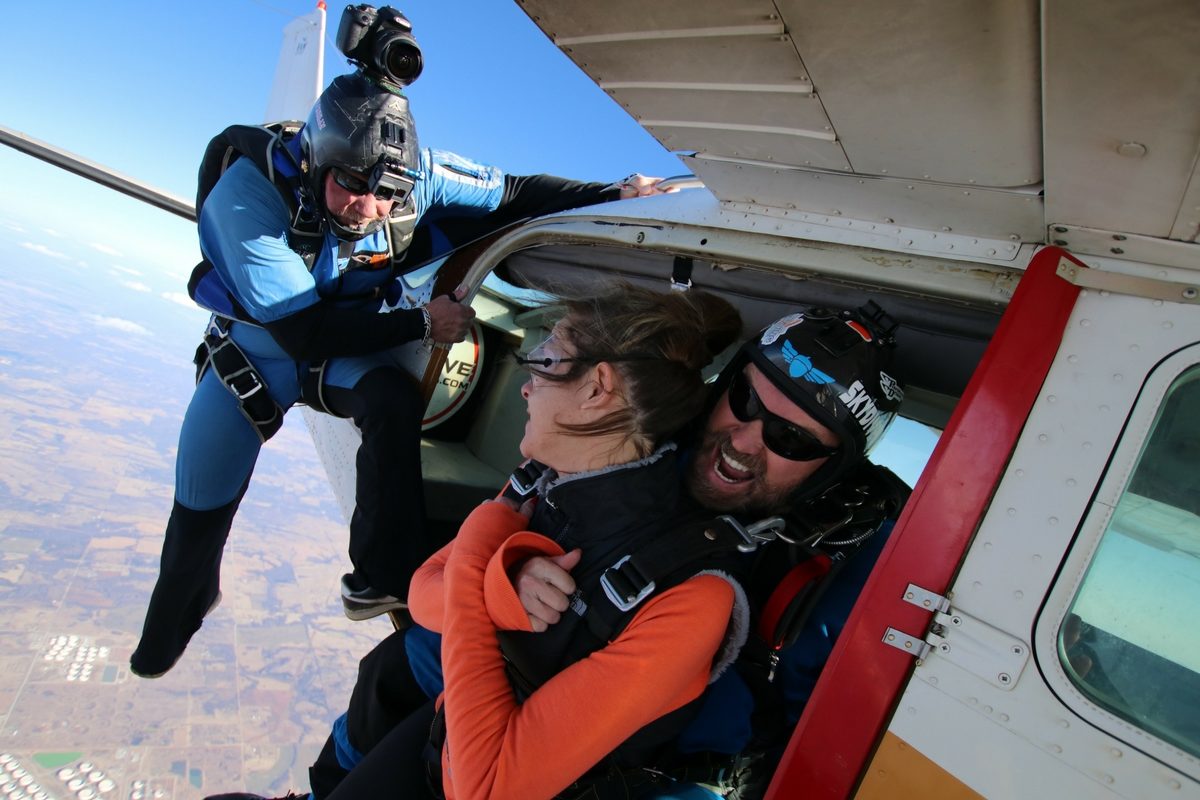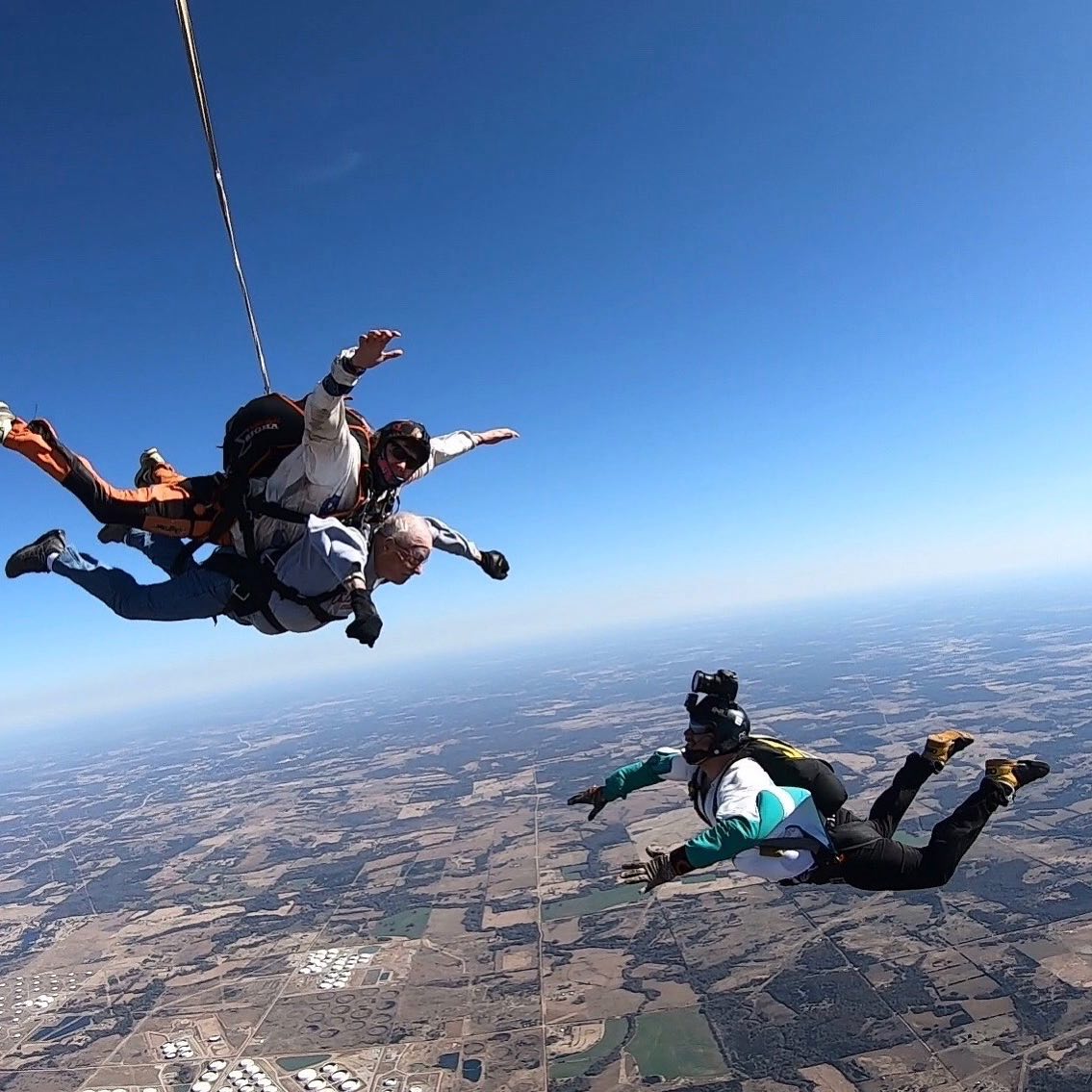Skydiving Exits: Can I do Backflips and Spins?
Tuesday, October 20, 2020
Whether you are heading to the dropzone for either a tandem jump or to embark on a skydiving license of your very own, you can very easily be forgiven for thinking that hucking a bunch of flips right out of the aeroplane will be heartily encouraged. Skydivers are extreme, right? What better way to get involved and be accepted among them than to profess your willingness for extra awesomeness? What you will actually find is that skydivers are very thorough and methodical, and that while extra acrobatics definitely are available by and by – you need to learn how to do things in the correct order. Exiting properly from the aircraft is a very important part of any skydive, and here are a few reasons why…

Control
When skydiving, you use what is called the ‘relative wind’ for control. The force generated by the rushing wind is applied and managed to create both stability and movement. This is how skydivers fly about – by bouncing the air off their bodies in different ways to create drive – or indeed to stay still. Because at the start the relative wind is a completely unfamiliar environment, being in control is goal number one for your first jumps – whether you are going tandem or solo. If you were to just throw some flips right out of the plane without first understanding how to stop flipping, you might very well still be doing flips when it comes time to open your parachute – which can be problematic.
Awareness
A huge part of successful skydiving is about understanding what is happening in both your immediate surroundings and the bigger picture. Most of the time it will not be just you that is jumping – you will either be in a group with other people or there will be other groups going before or after you. As you exit, the plane will be flying into the wind which could be a different direction from one jump to the next – or even different up high compared to what it is doing on the ground. This means you might well be in a different place over the dropzone than you were last time, and exiting the plane without losing your sense of position or direction is a foundation on which to build. Once you can assimilate all the different information about your jump, such as which way the plane is going, what the ground looks like where you need to land, where the sun is in the sky, what everyone else is doing etc. you are then ready to move on to more fancy maneuvers.

Spacing
Whether it is happening solo or with others, it is necessary for each ‘group’ on the plane to skydive in their own bit of sky. Everyone in the aircraft is organized in the best way possible so that when they jump out – usually a handful of seconds apart – there is sufficient space to be well clear of each other. Exit spacing is not an exact science, but by considering all the variables it is a reliable way to make sure everyone has enough space. Here is a quick few examples:
- Wind Speed: As the plane travels into the wind on ‘jump run’ – the stronger it is means the slower you travel across the ground. If it is not windy then gaps between exits just need to be a few seconds to create the right space. If it is super windy then more time can be taken between the groups to allow for room as the ground speed means the plane will not go too far away (or ‘deep’).
- Different Disciplines: Wingsuits allow the user to slow their descent rate and fly forwards over great distances, whereas tandem skydiving goes faster vertically and straight down. Tandems go before wingsuits in the exit order which creates both vertical space (tandem pairs fast/wingsuits slow) and horizontal space (empty sky for wingsuits to fly around in).
- Big and Small Groups: When you jump the plane is not just hovering in the air – it is moving forwards at maybe 100mph. Everyone has momentum when they exit which means they are thrown forwards even as they fall. Big groups have more momentum and throw forward further than small groups so small groups go first. This way around they get further apart on exit – the other way around they would get closer together.
There is more to it than just the above, but there few things should give you a general idea about the general factors.
…
When you are doing a tandem or learning to skydive solo you will not be expected to take on board lots of additional information right away – but the sooner you start learning about what is involved the better. When you are ready for the fancier moves you will be thoroughly encouraged to do them, and the best part of it will be having built the skills and awareness to confidently execute them. Let’s get started!
Copyright © 2024, Oklahoma Skydiving Center, All Rights Reserved.
DropZone Web Design & Marketing by Beyond Marketing, LLC





